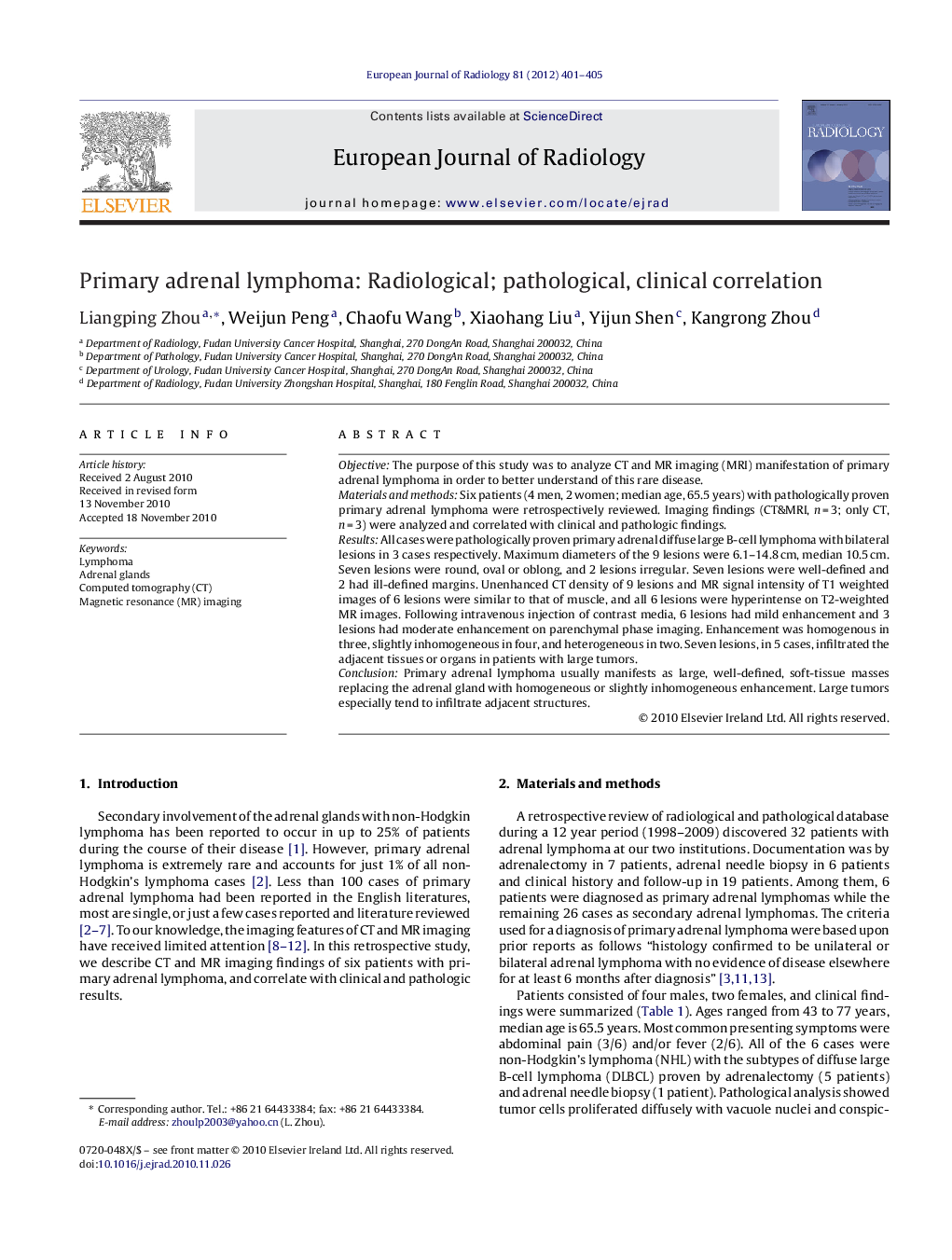| Article ID | Journal | Published Year | Pages | File Type |
|---|---|---|---|---|
| 4226425 | European Journal of Radiology | 2012 | 5 Pages |
ObjectiveThe purpose of this study was to analyze CT and MR imaging (MRI) manifestation of primary adrenal lymphoma in order to better understand of this rare disease.Materials and methodsSix patients (4 men, 2 women; median age, 65.5 years) with pathologically proven primary adrenal lymphoma were retrospectively reviewed. Imaging findings (CT&MRI, n = 3; only CT, n = 3) were analyzed and correlated with clinical and pathologic findings.ResultsAll cases were pathologically proven primary adrenal diffuse large B-cell lymphoma with bilateral lesions in 3 cases respectively. Maximum diameters of the 9 lesions were 6.1–14.8 cm, median 10.5 cm. Seven lesions were round, oval or oblong, and 2 lesions irregular. Seven lesions were well-defined and 2 had ill-defined margins. Unenhanced CT density of 9 lesions and MR signal intensity of T1 weighted images of 6 lesions were similar to that of muscle, and all 6 lesions were hyperintense on T2-weighted MR images. Following intravenous injection of contrast media, 6 lesions had mild enhancement and 3 lesions had moderate enhancement on parenchymal phase imaging. Enhancement was homogenous in three, slightly inhomogeneous in four, and heterogeneous in two. Seven lesions, in 5 cases, infiltrated the adjacent tissues or organs in patients with large tumors.ConclusionPrimary adrenal lymphoma usually manifests as large, well-defined, soft-tissue masses replacing the adrenal gland with homogeneous or slightly inhomogeneous enhancement. Large tumors especially tend to infiltrate adjacent structures.
